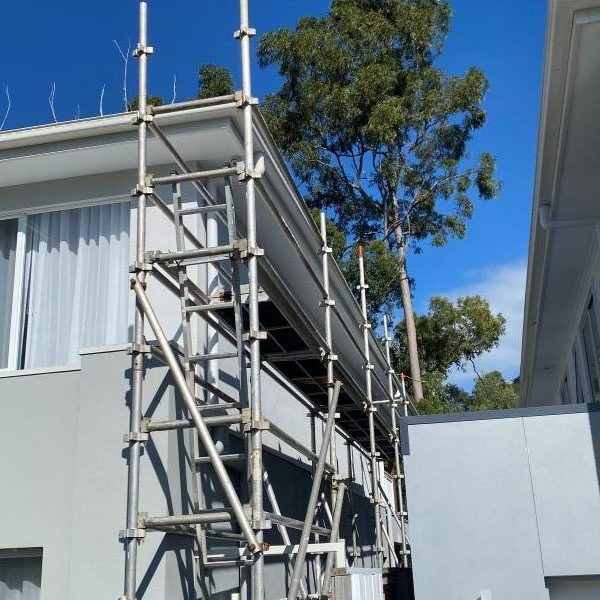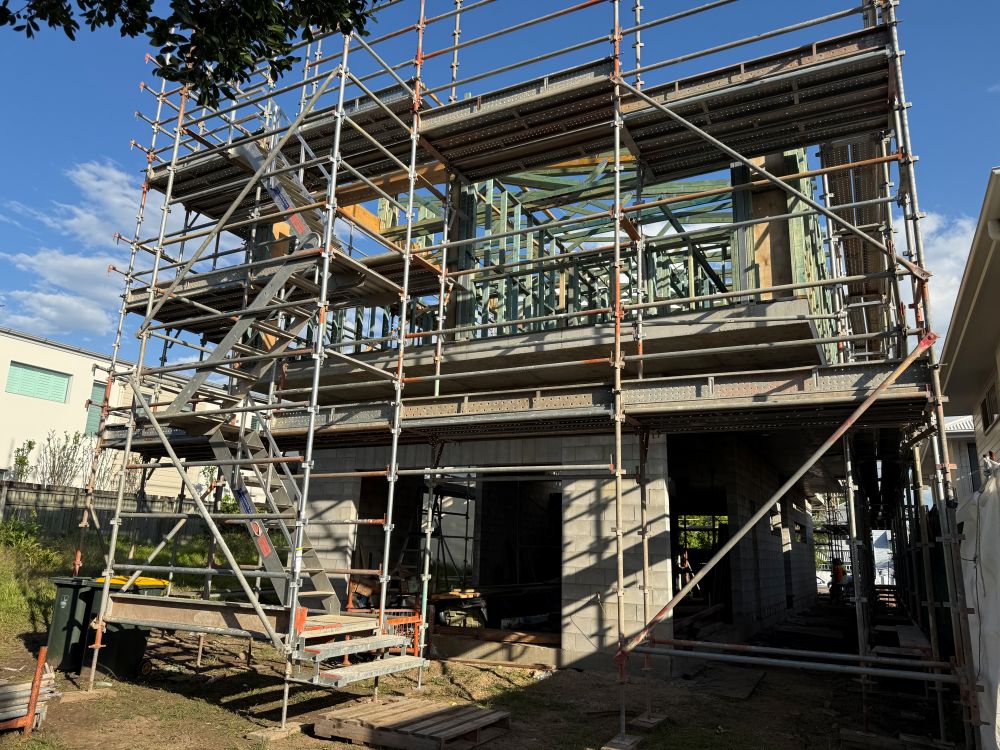Maximising Scaffold Load Capacity: Crucial Insights for Safety and Compliance in the Construction Sector
Understanding scaffold load capacity is a fundamental aspect of ensuring safety within the construction industry. This concept delineates the maximum weight that a scaffold can safely support during various tasks, which is vital for preventing accidents and ensuring the structural integrity of the scaffold. It encompasses three primary categories of loads that need meticulous evaluation:
- The inherent weight of the scaffold, commonly known as the dead load.
- The cumulative weight of workers, tools, and materials placed on the scaffold, referred to as the live load.
- External forces such as wind, rain, and vibrations that can affect the scaffold’s stability, categorised as environmental load.
Comprehending these load categories is imperative, as they directly influence the overall stress imposed on a scaffold during its use. Following these load calculations is not just a best practice; it is a legal requirement under Australian law to ensure the safety of all personnel involved in construction operations.

Step-by-Step Guide to Using Our Scaffold Load and Height Calculator Effectively
While there isn’t a universal formula applicable to every scaffold configuration, our scaffold load calculator provides an intuitive means to obtain accurate estimates by simplifying the critical variables involved. This tool is tailored specifically for residential builders, homeowners, and scaffold hire professionals who adhere to the standards established by Australian OHS regulations.
Step 1: Define the Type of Work
Identify the specific nature of the work being performed, which may encompass tasks like roof restoration, exterior painting, solar panel installation, cladding, or rendering to ensure that the scaffold is set up appropriately for the job.
Step 2: Indicate the Number of Workers
For instance, if there are two workers who will simultaneously operate on the scaffold platform, inputting this number allows for precise load estimation, ensuring the scaffold can accommodate them safely.
Step 3: Estimate the Weight of Materials
This should include an estimation of approximately 120 kg of rendering materials or tools that will be utilised during the project, which is essential for accurate calculations.
Step 4: Specify the Height of the Platform
For example, if the height is set at 4.5 metres above ground level, this will influence the scaffold configuration and stability.
After entering this information, the calculator will provide a recommended scaffold configuration that includes:
- The appropriate duty class (e.g., Light, Medium, or Heavy).
- An estimation of the Safe Working Load (SWL) per bay.
- The recommended scaffold type (e.g., aluminium tower or steel frame).
- Essential safety features required (such as guardrails, soleplates, and stabilisers).
- Compliance indicators related to height (e.g., tie-offs required for structures above 4 metres).
Exploring the Reasons Why a Universal Load Formula for Scaffolding Is Inadequate
Even though the scaffold calculator is a helpful tool for generating load estimates, scaffolders and engineers do not rely on a single formula due to several critical factors:
- Scaffold systems can vary significantly based on materials and designs, including aluminium, steel, modular, and tube-and-coupler scaffolding systems.
- The intended use greatly impacts the load capacity (for example, whether the scaffold is designated for painting or masonry work).
- Different manufacturers may offer varying platform strength and component ratings, resulting in inconsistencies in load calculations.
Industry-Standard Methodology for Calculating Safe Working Load (SWL)
Professionals consistently employ the following formula as a fundamental reference when estimating the load capacity of scaffolds:
Safe Working Load (SWL) per bay = (Platform Load Rating × Safety Factor) – Scaffold Component Weight
Detailed Example:
- A platform that is rated for a maximum load of 600 kg.
- Utilising a 4:1 safety margin: applying only 25% of the rating results in a maximum load capacity of 150 kg.
- Subtracting the weight of the scaffold structure, which is 100 kg.
- The resultant usable working load is 50 kg (this figure is conservative and often does not reflect actual planning).
Considering the complexities of real-world conditions, professional scaffolders typically follow manufacturer guidelines, engineering tables, and local regulations rather than solely relying on this simplified formula.

Implementing Best Practices in Scaffold Evaluations by Professionals
Professional scaffold evaluations typically include the following essential elements:
- Thoroughly reviewing manufacturer load data and confirmed span ratings for accuracy and compliance.
- Calculating the total live, dead, and environmental loads to guarantee maximum safety and stability.
- Ensuring compliance with AS/NZS duty class specifications to meet industry standards effectively.
- Obtaining engineering sign-off for any custom or elevated scaffold configurations to ensure compliance with safety standards.
- Conducting comprehensive visual and structural inspections before scaffold use to identify and mitigate potential hazards.
Customising Scaffold Practices for Environmental Conditions and Site-Specific Needs
Managing Wind Exposure in Coastal Queensland
In regions classified under wind zones N3 and N4, lateral forces acting on scaffolds are significantly heightened. As a result, scaffolds need to be anchored at shorter intervals, and additional bracing or shade cloth may be required, especially during high-wind seasons, to maintain stability and safety.
Considerations Regarding Soil and Ground Types
In cases of unstable or sloped soil conditions, it is crucial to use soleplates and adjustable base jacks to enhance scaffold stability. Moreover, sites with uneven elevations may necessitate the implementation of levelled bay systems, creating a safe working environment for all personnel involved.
Regulatory Requirements for Work Conducted Above Four Metres
In Queensland, any scaffold platform that exceeds four metres in height must undergo thorough inspection and certification. A scaffold handover certificate is required under the Work Health and Safety Regulation 2011 to ensure full compliance with safety standards and regulations.
Critical Safety Regulations That Must Be Adhered To
- Work Health and Safety Regulation 2011 (QLD)
- Managing the Risk of Falls at Workplaces (Code of Practice, 2021)
- AS/NZS 1576 and AS/NZS 4576 Standards governing scaffold safety protocols.
- High Risk Work Licence (HRWL) is mandatory for any scaffold setup exceeding four metres in height.
Site supervisors are responsible for conducting regular inspections, particularly following adverse weather conditions or significant changes to scaffold height or load, to ensure ongoing adherence to safety regulations.
Case Study: Scaffold Application in Robina, Queensland
In a recent project located in Gold Coast, a homeowner in Robina required scaffolding to repaint and render a two-storey exterior wall. The working height for this undertaking was established at five metres, and two tradespeople utilised approximately 200 kg of rendering materials and tools throughout the duration of the project.
Using our scaffold calculator, the recommended scaffold configuration was as follows:
- Scaffold class: Medium Duty, determined to be appropriate for the task.
- System type: Steel frame with timber planks, chosen for their durability and structural integrity.
- Additional safety measures: Complete edge protection, soleplates for soft earth conditions, and wind mesh to reduce wind exposure.
The scaffold successfully passed all mandatory inspections and complied with Queensland’s OHS regulations, resulting in no project downtime throughout the entire undertaking.
Key Considerations for Scaffold Height and Load Capacity Calculations
Determining scaffold height and load capacity should never be treated as a matter of guesswork. In residential projects, this thorough evaluation is essential for ensuring safety, managing costs effectively, and achieving compliance with local regulations.
Given the specific demands related to Australian conditions, particularly in southeast Queensland, it is highly advisable to obtain an accurate scaffolding quote and to ensure that all installations are performed by qualified professionals.
Get Expert Assistance and Solutions from CanDo Scaffolding Hire
For further details about our services, please do not hesitate to contact us at 1300 226 336 or send an email to [email protected] at your convenience.
We offer a comprehensive array of scaffolding solutions, including void protection platforms and roof edge protection, customised to meet the unique needs of any residential or light commercial construction project.
Understanding Scaffold Load Capacity for Residential Projects
The Article: Scaffold Load Capacity Insights for Residential Projects first appeared on https://writebuff.com
The Article Scaffold Load Capacity for Residential Construction Projects Was Found On https://limitsofstrategy.com
References:
Scaffold Load Capacity for Residential Construction Projects

